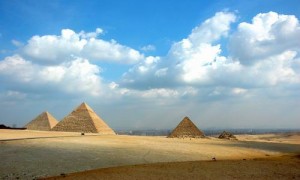 Scientists at the University of Alabama also found 3,000 ancient settlements using a new technique of infra-red imaging. The astonishing results have been confirmed by archaeologists with picks and shovels, who have located two of the pyramids found from space. “I could see the data as it was emerging, but for me the ‘aha’ moment was when I could step back and look at everything that we’d found,’ Dr Sarah Parcak told. “I couldn’t believe we could locate so many sites all over Egypt.”
Scientists at the University of Alabama also found 3,000 ancient settlements using a new technique of infra-red imaging. The astonishing results have been confirmed by archaeologists with picks and shovels, who have located two of the pyramids found from space. “I could see the data as it was emerging, but for me the ‘aha’ moment was when I could step back and look at everything that we’d found,’ Dr Sarah Parcak told. “I couldn’t believe we could locate so many sites all over Egypt.”
The team analysed images from satellites orbiting 400 miles above the Earth, equipped with cameras so powerful they can pinpoint objects less than a yard in diameter. Infra-red imaging was then used to highlight different materials under the surface. Because the ancient Egyptians built houses from mud brick, which is must denser than surrounding soil, they left a clear fingerprint that the researchers could identify as tombs, pyramids or homes. The technique is so powerful that it can even be used to monitor sites for looting.
Dr Parcak believes there are many more buildings buried deeper than those already spotted – even under the River Nile. “These are just the sites close to the surface. There are many thousands of additional sites that the Nile has covered over with silt,” she said. “This is just the beginning of this kind of work.” The results are a huge boost for the new science of space archaeology.